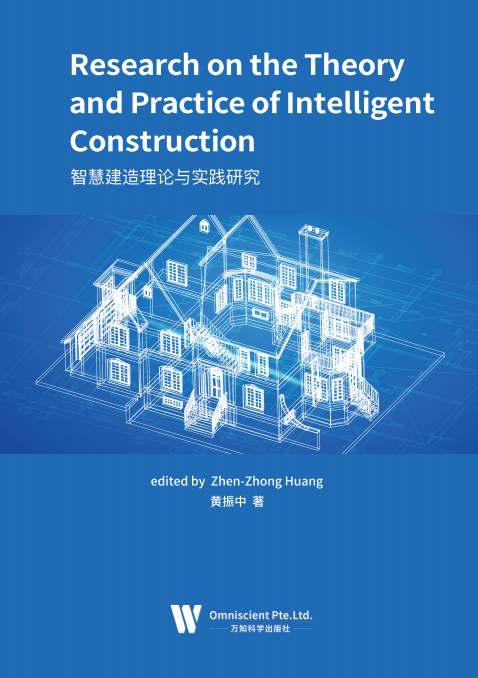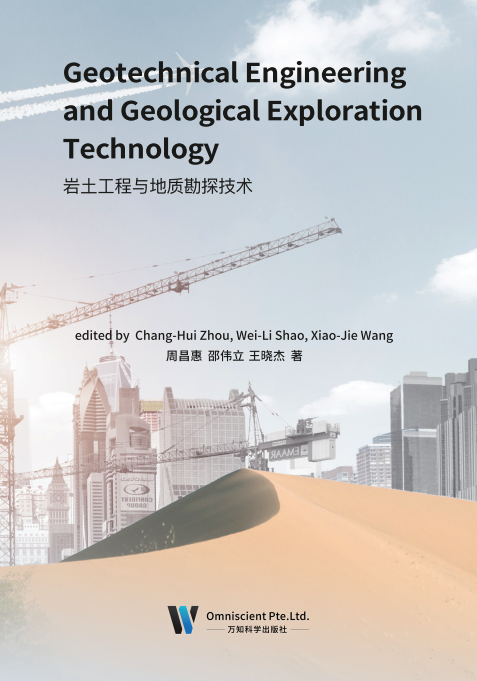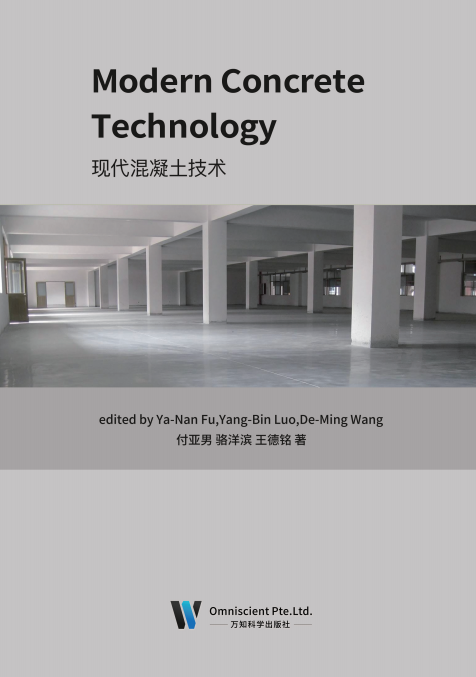
From the application practice of intelligent construction technology in recent years, its application is not simply the application of new software. To be successful, intelligent construction needs a complete set of systems, plans and methods, and an executive team should match it. The construction industry practitioners who apply intelligent construction technology also need to master the relevant knowledge of intelligent construction technology to apply it well, and realize the value of intelligent construction technology application to a greater extent through system integration.
As a new thing in the construction industry, intelligent construction has been and will continue to lead the information revolution in the construction field through continuous promotion and practice in the past decade. With the gradual deepening of intelligent construction technology, the traditional architecture of construction industry will be broken, and a new architecture dominated by information technology will be replaced. The application of intelligent construction technology has completely broken through the technical category, and will become a powerful driving force for the transformation of the leading construction industry. This is both an opportunity and a challenge for the whole construction industry.
At present, China is carrying out the largest engineering construction in the world. With the research and application of BIM, Internet of things, mobile Internet, cloud computing, big data and other information technologies, intelligent construction has= become the consensus of the majority of scholars. At present, there are still some problems to be solved in the key technology, evaluation system and industrial model of intelligent construction.
前 言
从近年来智慧建造技术的应用实践来看,其应用并不单纯是新软件的应用。智慧建造要取得成功,需要有一整套的体系、计划、方法,并且要有执行团队与之匹配:应用智慧建造技术的建筑业从业人员也需要掌握智慧建造技术的相关知识才能将其应用得比较好,并且通过系统集成更大限度实现智慧建造技术应用的价值。
智慧建造作为建筑业的一个新生事物,在近十年中,通过不断地推广与实践,人们已取得了一个共识:智慧建造已经并将继续引领建设领域的信息革命。随着智慧建造技术的逐步深入,建筑业的传统架构将被打破,一种以信息技术为主导的新架构将取而代之。智慧建造技术的应用完全突破了技术范畴,将成为主导建筑业进行变革的强大动力。这对于整个建筑业而言,是机遇,更是挑战。
目前,我国正在进行着世界上最大规模的工程建设,随着 BIM、物联网、移动互联网、云计算、大数据等信息技术的研究与应用,智慧建造已经成为广大学者的共识。就现阶段而言,智慧建造在关键技术、评价体系以及产业模式等方面仍存在着一些需要解决的问题。

Geotechnical engineering is a new technical system established by European and American countries in 1960s on the basis of previous civil engineering practice. It is mainly a discipline to study rock mass and soil engineering problems.
In recent years, China’s highway, railway, urban rail transit and other infrastructure, as well as the construction of urban buildings have entered a stage of rapid development. These infrastructure and buildings are built on the surface of the ground or a certain depth below the surface of the rock and soil. Before the design and construction, we must investigate the engineering geological conditions of the construction area or construction site, predict and evaluate the possible engineering geological problems and their impact on the buildings or geological environment, and put forward prevention and control measures to ensure the normal progress of the project construction.
Geotechnical engineering survey technology is an important means of construction engineering investigation, which directly serves the foundation and foundation engineering design. It is the key to ensure the safety and stability of construction projects and the rationality of technology and economy to adopt reasonable survey technical means.
Based on the principle of paying equal attention to practical technology and theoretical basis, this book coordinates the relationship between basic theory and modern science and technology, absorbs advanced production equipment and production technology, and arranges the contents of each chapter as a whole, so as to make the contents of the book closer to production practice.
前 言
岩土工程直译为“地质技术工程”,是欧美国家于 20 世纪 60 年代在前人土木工程实践的基础上建立起来的一个新的技术体系,它主要是研究岩体和土体工程问题的一门学科。
近年来,我国公路、铁路、城市轨道交通等基础设施以及城市建筑的建设进入高速发展阶段。这些基础设施和建筑都修建在地表或地表以下一定深度范围的岩土体中,在设计和施工之前,必须考察建设地区或建筑场地的工程地质条件,预测和评价可能发生的工程地质问题及其对建筑物或地质环境的影响,并提出防治措施,以保证工程建设的正常进行。
岩土工程勘察技术是建设工程勘察的重要手段,直接服务于地基和基础工程设计。采用合理的勘察技术手段是确保建设工程安全稳定、技术经济合理的关键。
本书以实用技术及理论基础并重为原则, 协调好基础理论与现代科技间的关系,吸收先进的生产设备和生产工艺,统筹安排各章内容,使书中内容更能贴近生产实践。

The production process of chemical products is a process in which raw and auxiliary materials are transformed into products that meet people’s needs through a series of physical and chemical changes. In addition to the non production factors such as market, management and sales, the economic benefits of chemical products production largely depend on whether the production methods and processes adopted are advanced, reasonable and optimized, which are embodied in the design of production equipment and technology. Therefore, the design of production process of chemical products is the basis for the production of chemical products and obtaining good economic benefits. Production process design is the core of chemical product production process design, and it is also the first design content. It can not only outline the whole design and determine the direction of the whole design, but also play a leading role in organizing and coordinating the cooperation of various non technological specialties. When the process design principle is determined, the principles of civil engineering, equipment, instrument and public works are determined with the process. Therefore, the design of production process has an important impact on the level and quality of the whole design, as well as whether the project can be put into operation successfully and achieve good economic benefits. Reasonable and optimized production process is the basis and guarantee to produce qualified chemical products and obtain good economic benefits. Therefore, in the design of chemical project, we must first pay attention to the design of production process.
In view of the importance of the production process design in the whole chemical project design, this book attempts to make a more comprehensive and systematic introduction to the problems involved in the production process design, pays attention to the systematicness and integrity of the content description, and strengthens the scientificity, integrity, seriousness and standardization of the process design. This book gives readers a complete and clear understanding of the process and method of chemical product production process design, which is conducive to cultivating readers’ overall concept of engineering design, process optimization concept, production practice concept and technical and economic concept.
前 言
化工产品的生产过程就是原辅材料经过一系列的物理的、化学的变化转变成满足人们需要的产品的过程。化工产品生产的经济效益除与市场、管理和销售等非生产因素有关外,在很大程度上取决于所采用的生产方法和工艺是否先进、合理和优化,具体体现在设计的生.产装置和工艺上, 因此, 化工产品生产工艺的设计是化工产品的生产及其取得良好经济效益的基础。生产工艺流程设计是化工产品生产工艺设计的核心,也是需要最先进行的一项设计内容。它不但能勾画出整个设计的概貌,决定整个设计的方向, 而且还起着组织与协调各个非工艺专业互相配合的主导作用。当工艺设计原则确定后,土建、设备、仪表及公用工程等各项原则均随着工艺的确定而确定下来。因此,生产工艺流程设计对整个设计的水平和质量.以及项目投产能否取得成功并取得良好经济效益具有重要影响,在整个化工设计中居于核心和支配地位。合理、优化的生产工艺流程是生产合格化工产品并取得良好经济效益的基础和保证,因此,进行化工项目的设计,必须首先重视生产工艺流程的设计。
鉴于生产工艺流程设计在整个化工项目设计中的重要性,本书尝试对生产工艺流程设计所涉及的问题做较全面系统地介绍,注重内容阐述的系统性和完整性, 强化了工艺流程设计的科学性、完整性、严肃性和规范性,给读者对化工产品生产工艺流程设计的过程与方法以完整、 清晰的认识和了解,利于培养读者从事工程设计的全局观念、过程优化观念、生产实际观念和技术经济观念。

Although great achievements have been made in the construction of highway network in China, with the development of regional economy, traffic problems are becoming more and more serious. The main reason is that the layout of highway network is unreasonable, which is difficult to meet the demand of traffic demand growth. There are many problems in the road network of small and medium-sized cities, such as low technical level and poor service level. Therefore, the construction of highway network has become an important problem in the field of infrastructure construction in various large and medium-sized cities, and how to build roads scientifically and reasonably to form road network has become an urgent problem to be solved in large and medium-sized cities.
Transportation industry is the link of production, distribution, exchange and consumption. One of the basic conditions for developing production, developing market and promoting consumption is to have circulation conditions. With the expansion and improvement of production and economic scale, its circulation conditions must be correspondingly advanced and developed in advance, which is also the general law of market economy. Marx once pointed out that in addition to mining, agriculture and industry, there is a fourth physical production sector, that is, transportation, or transportation of goods. Looking at all countries in the world, although the position of road transportation in different countries and regions is different, it is generally in the main position and plays an important role. Since entering the 21st century, with the expansion of highway network scale, the role of highway transportation in transportation is increasingly significant, so the quality of highway network planning will directly affect the development of the entire transportation industry .
前 言
尽管我国公路网建设已取得了巨大的成绩,但随着区域经济的发展,交通问题日趋严重。其主要原因是公路网布局不合理,难以满足交通需求增长的要求。中小城市的道路网普遍存在着公路网技术等级低、服务水平差等问题。因而公路网建设已成为了各个大中城市在基础设施建设领域中的重要问题,随之而来的如何科学合理的建设公路形成路网就成为大中城市迫切要解决的问题。
交通运输业是联系生产、分配、交换和消费的纽带。发展生产、开发市场、促进消费, 其基本条件之一是要具备流通条件, 并随着生产和经济规模的扩大与提高,其流通条件必须相应地先行一步和超前发展,这也是市场经济的普遍规律。马克思曾指出:“除了开采业、农业和工业,尚有第四个物质生产部门,那就是运输业,或是运输人,或是运输商品”。综观世界各国,公路运输虽然在不同国家和地区的各种运输方式中所占位置有所不同,但普遍都处于主要地位,发挥着重要的作用。进入 21 世纪以来,随着公路网规模的扩大,公路运输在交通运输的作用日益显著,因此公路网规划的好坏将直接影响着整个交通运输业的发展。

As the most important engineering structural material, cement concrete has been widely used because it has many superior properties, such as easy processing, low energy consumption, good durability, and can be combined with steel to form various load-bearing structures with different characteristics. It is suitable for large-scale production and construction, so it has been widely used. From the general industrial and civil buildings, highway and railway bridges, sleepers, poles, piles, pressure pipes, oil tanks and watertowers, to high-rise buildings, underground buildings, marine structures, nuclear power plant protective shells and pressure vessels, large-span space structures and high-rise tower mast structures, concrete structures have become an indispensable and widely used engineering structure material. In the past, it was generally considered that concrete is an experienced material, which is relatively simple from the selection of raw materials, configuration technology to construction application. However, since the late 1970s, concrete technology has made great progress and has entered the field of high-tech, mainly manifested in: (1) the great development of raw materials; (2) the rapid development of ready mixed (commercial) concrete and high-strength concrete technology; (3) concrete construction technology has made great progress; and so on.
前 言
水泥混凝土作为最重要的工程结构材料,因为具有易于加工成型、能耗低、耐久性好、与钢材结合可以组成各类不同特性的承重结构等许多优越性能,适宜于大规模生产和施工,所以获得了广泛的应用。从一般的工业与民用建筑、公路与铁路桥梁、轨枕、电杆、桩、压力管道、油罐与水塔等方面到高层建筑、地下建筑、海洋结构、核电站防护壳与压力容器、大跨度空间结构与高耸塔桅结构等,混凝土结构已经成为现代不可缺少的,将来越来越广泛使用的一种工程结构材料。过去一般认为混凝土是一种经验配置的材料,从原材料的选择、配置工艺到施工应用都比较简单。 但是从 70 年代末期至今, 混凝土技术已经有了很大的进展并已经进入了高科技的领域,主要表现在:(1)原材料有了极大的发展;(2)预拌(商品)混凝土与高强混凝土技术快速发展;(3)混凝土施工技术有了长足进步;等等。